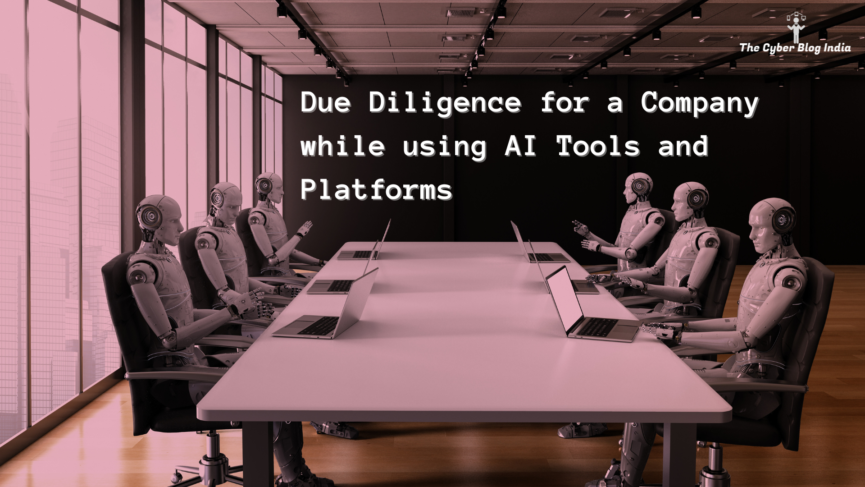Due Diligence for a Company while using AI Tools and Platforms

Integrating AI tools in businesses has become indispensable in the fast-paced world of technology. However, this integration comes with its own set of legal, ethical, and operational challenges. Looking through and conducting due diligence is essential to mitigate risks and ensure that the use of AI aligns with company policies and legal requirements. Here are eight critical steps to follow when conducting due diligence while selecting an AI platform.
Step 1: Establish an AI Tool Use Policy
The first step in AI due diligence is to determine whether the company has a policy governing the use of AI tools by employees and contractors. This policy should outline permissible uses, restrictions, and responsibilities. In addition, it must align with legal restrictions on the use of AI while considering its implications on data privacy. If such a policy exists, review and assess its comprehensiveness and relevance to current AI technologies and practices. Additionally, identify the individuals or departments responsible for administering and enforcing this policy.
Step 2: Assess Third-Party AI Tool Diligence
Evaluate the company’s process for assessing third-party AI tools. This includes investigating how the company ensures that tool providers have the legal rights to the data used for training their AI models. A thorough vetting process helps protect the company from potential intellectual property infringements and data privacy issues with the company and any such affected third party. Run an anti-virus scan on the AI platform as well.
Step 3: Inventory and Usage Documentation
Compile a list of all AI tools used by the company, along with their terms of use or applicable licenses. Understanding the specific use cases for each tool and maintaining an inventory managed by a designated team or individual is crucial. This ensures accountability and facilitates regular reviews and updates.
Step 4: AI in Product Development
Identify any AI tools used in the creation of company products. For each product, document the AI tools involved and their specific applications. Additionally, pinpoint any product features or components that incorporate AI-generated outputs. This information is vital for understanding the extent of AI integration and potential dependencies.
Step 5: Intellectual Property Considerations
Review all intellectual property (IP) created using AI tools. This includes patents and copyrights. Check whether the company has filed any patent or copyright applications involving AI-generated content and ensure that all legal obligations, such as disclosing AI involvement and disclaiming AI-generated content where necessary, have been met.
Step 6: Trade Secret Management
Investigate whether company trade secrets or confidential information have been entered into third-party AI tools. If so, identify the information and the tools used. Also, determine whether these AI tools have adequate measures to safeguard trade secrets’ confidentiality.
Step 7: AI Code Generators
Assess the use of AI code generators in developing company software. Identify which AI code generators have been used and for which software projects. Conduct open-source code scans on AI-generated code in company software to ensure compliance with licensing terms and identify potential vulnerabilities or legal risks.
Step 8: Company-related AI Tools and Models
If the company has developed its own AI tools or trained AI models, document these developments and their applications. Review any licenses or agreements related to these tools and models, ensuring compliance with all terms and conditions. Additionally, examine the types and sources of data used for training AI models and the company’s policies and practices for verifying the provenance and legality of this data.
Conclusion
Conducting comprehensive due diligence on a company’s use of AI tools is essential for mitigating risks and ensuring compliance with legal and ethical standards. By following these eight steps, businesses can effectively manage their AI assets, safeguard intellectual property, and maintain the integrity of their operations. As AI technology evolves, staying vigilant and proactive in due diligence practices will be crucial for sustainable and responsible AI integration. How prepared is your company to navigate the complex landscape of AI integration and ensure compliance with evolving legal and ethical standards?
